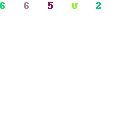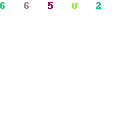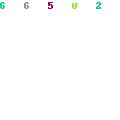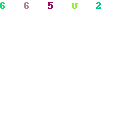Author:
bobgto65 Minor editing by Sirius
How to prevent Rust-out around the gas tank door.About 2 years ago there were a couple threads that explained many 2000-05 Bonneville have rust-through around the gas filler door. This is also visible from inside the trunk if you remove the left trim. I owned a 2002 Bonneville SSEi and I started getting bubbles in the paint about 2 years ago. Now that I own a 2004 Bonneville GXP with only 33,400 miles, that was garage kept, with no sign of rust, I wanted to see what can be done to prevent the rust through.
The first three pictures are courtesy of Andrew from Bonnevilles Unlimited. They were posted previously. The picture below shows a view from inside the wheel well with the top half of the wheel well cut off.

Now with the wheel well removed we are looking at the quarter panel from the inside. This is also visible from inside the trunk if you remove the left trim. I will explain how the rust occurs in a little while.


Here is the inside of the gas door on my ’04 Bonneville that was garage kept since new. If you put your finger behind the tab for the lower screw for the hinge, you can feel a small recess. There is a gap between the quarter panel and sheet metal for the gas filler surround near the tip of the arrow.

Once water gets in here, it fills up a small pocket just underneath the bottom flat surface of the filler opening, along the quarter panel. See the blue areas in the pictures below. The water is trapped in this space and has nowhere to drain, as the space is sealed with hard black foam. Eventually the surface protection on the inside surface of the quarter panel sheet metal breaks down and rust begins. Over time, enough rust will form to let the water drain out around the foam seal and it leaks further down the quarter panel into the inside of the fender well. By the time the rust is visible below the filler neck sheet metal insert, there is already extensive rusting of the quarter panel sheet metal inside the pocket. Of course GM planned this so that the rust does not appear until one month after the 6 year 100,000 mile rust through warranty expires.


Here is a picture taken from the inside of the trunk on my 2002 Bonneville

And on the outside, you can see the extensive damage. It is too late to do anything except cut out the rusted area and have new metal welded in.


The outside of my 2004 Bonneville looks perfect and the view inside the trunk below shows no rust stains. But when I stuck a Q-tip inside the pocket it was wet and there was a slight rusty color so the rust has already started. The first time you drive your car in the rain or through a car wash, the pocket will fill up with water

Now that we know what causes the rust, the main steps to prevent progression are:
1.) To dry out the water pocket
2.) Coat the inside of the packet with a rust sealer/preventer
3.) Seal the inside of the gas door to prevent more water from getting into the pocket.
To dry the pocket out, I used my air compressor and an inflation needle. I cut a small piece of insulator off of a #14 wire and stuck it on the end of the needle. Then I taped the trigger of my air blower open and, using low pressure, inserted the tubing into the small notch at the back of the filler door and down into the pocket. I also inserted the inflation pin into the front gap just below the hinge screw tab. I tested the pocket with Q-tips until it was completely dry. This took about 2 days of blowing compressed air into the pocket to allow all the water to evaporate and get the pocket completely dry.

I chose Rust Bullet to prevent further rust. Some reviews state that it works better than POR-15. To get the Rust Bullet into the pocket, I used a 30cc syringe with an 18 gauge needle.

You only need about 10cc (2 teaspoons) of paint to fill up the pocket. The paint is pretty thick so it takes a minute or two to fill up the syringe.

Just place the needle inside the back notch and empty the syringe . The paint will flow into the pocket. If you put too much paint in, then it will bubble up through the gap near the fuel door hinge. It’s probably a good idea to mask the area to keep paint off the body.

You can fill the pocket with paint, but it will never dry or set. I let the paint soak in for 10 minutes then use the syringe to suck out the excess paint, leaving a coating of paint on the entire inside of the pocket. If you get any Rust Bullet on the finish, wipe it off immediately with a rag and some paint thinner.

Now it’s back to the compressed air. You have to let the paint dry which could take forever in a closed pocket. I blew compressed air in to the pocket and, testing with a Q-tip until no paint showed on the Q-tip, it took about 8 hours to dry. The next day. I applied a second coat of Rust Bullet and sucked out the excess, and blew it dry again. Now we have a dry pocket with 2 coats of paint, so any rust that is present will not be exposed to air or moisture and it will not rust any further. You can wipe any excess paint off the finish with a rag and some paint thinner if you do it right away.
Finally, it is time to seal off the areas so that no more water can get in. I used a clear GE silicone sealant. This stuff gets messy so a pair of latex gloves and plenty of rags are a must.


Before applying the sealant, clean the areas to be sealed and make sure they are dry. I am sealing the area inside the gas door along the bottom behind the hinge, the small gaps at the back edge of the gas door opening around the filler neck, both inside the wheel housing and inside the fuel door, and the small drain hole inside the fuel door just below the filler neck. I also put a small seam along the bottom welds.




The area behind the hinge requires the most sealant.

And here is what it looks like after applying the sealant. It looks messy but after I applied the sealant, I smoothed it out with my gloved finger and wiped off the excess with rags. Then I let it set for an hour and applied a second coat. Now the pocket is completely sealed so no water can get in and there should never be any rust through. But I will have to wait several years to find out if it really works!







